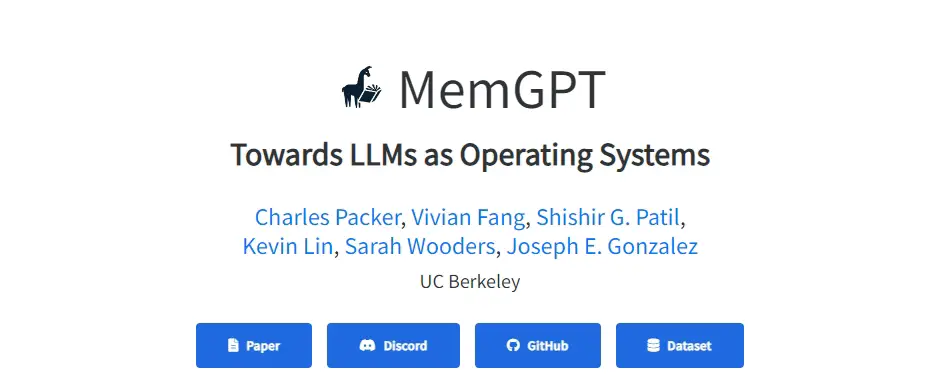MemGPT

What is MemGPT?
MemGPT, developed by a team at UC Berkeley, represents a significant advancement in the field of large language models (LLMs). It addresses a fundamental limitation of LLMs: their restricted context window. By introducing a virtual context management system, inspired by hierarchical memory systems in operating systems, MemGPT effectively expands the LLM’s context window. This innovation allows LLMs to manage their own memory, enabling them to handle extended conversations and complex document analysis more efficiently. MemGPT operates by parsing the LLM’s text outputs and managing data between main and external contexts, thus facilitating a more dynamic and extensive interaction capability. This approach marks a substantial leap in making LLMs more versatile and effective for a range of applications, from perpetual chats to in-depth data analysis.
MemGPT Details
Price: Freemium
Tag: AI Chatbot,AI Response Generator
Developer(s): Charles Packer, Vivian Fang, Shishir G. Patil, Kevin Lin, Sarah Wooders, Joseph E. Gonzalez at UC Berkeley
Key Features of MemGPT
- Extended Context Management: Overcomes the limited context window of traditional LLMs by managing a virtual context.
- Memory Tier Management: Utilizes a tiered memory system to efficiently handle data between main and external contexts.
- Dynamic Interaction Capability: Enhances the ability of LLMs to maintain extended conversations and analyze large documents.
- Inspired by Operating Systems: Draws from hierarchical memory systems in traditional operating systems for effective memory management.
- Interrupts for Control Flow: Employs interrupts to manage the interaction between the LLM and the user, ensuring smooth operation.
- Versatile Application: Suitable for a variety of tasks, including multi-session chat and comprehensive document analysis.
How to Use MemGPT?
- Step 1: Understanding the System: Begin by familiarizing yourself with the concept of virtual context management and how MemGPT applies it to LLMs. Understanding the underlying principles is crucial for effective implementation.
- Step 2: Integration with LLMs: Integrate MemGPT with your existing LLM setup. This involves setting up the tiered memory system and ensuring that your LLM can interact with MemGPT’s virtual context management.
- Step 3: Configuring Memory Management: Configure the memory tiers and context management settings according to your specific needs, whether it’s for extended conversations, document analysis, or other applications.
- Step 4: Monitoring and Adjusting: Continuously monitor the performance of MemGPT in your applications. Adjust the memory management settings as needed to optimize the performance and context handling of your LLM.
